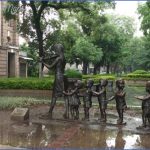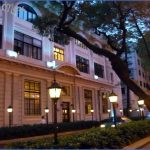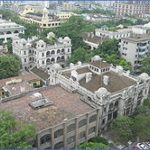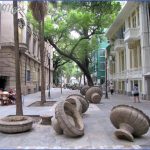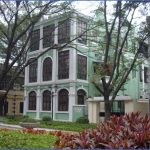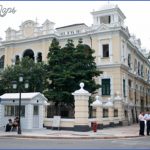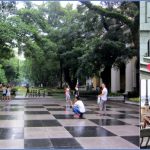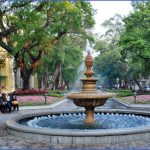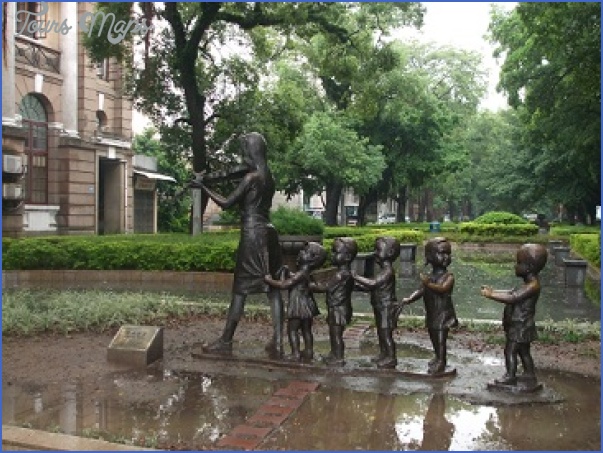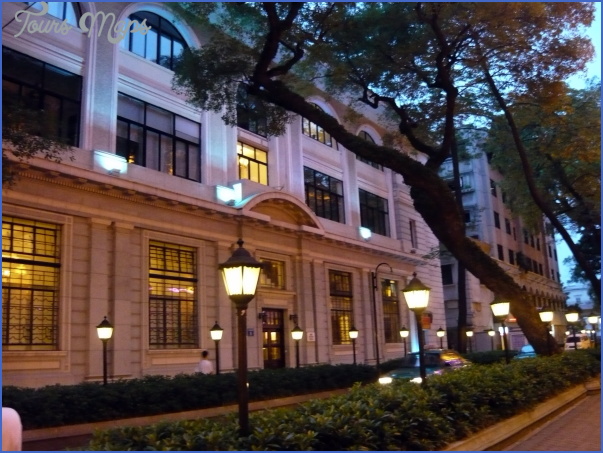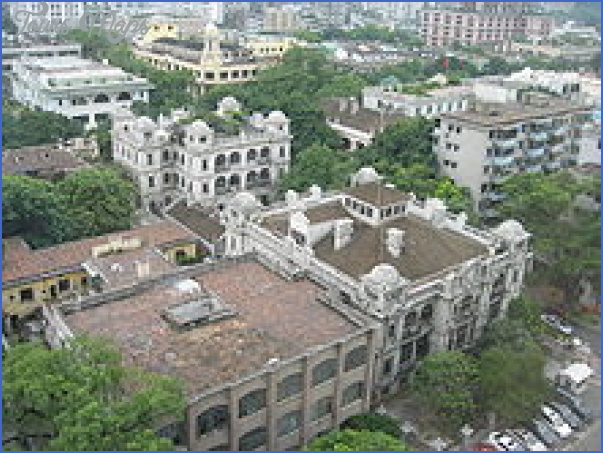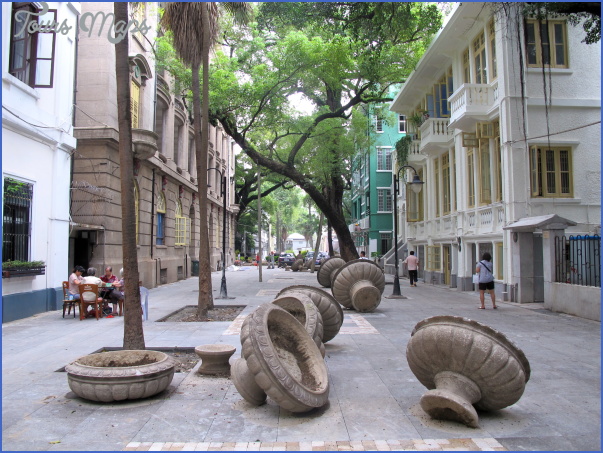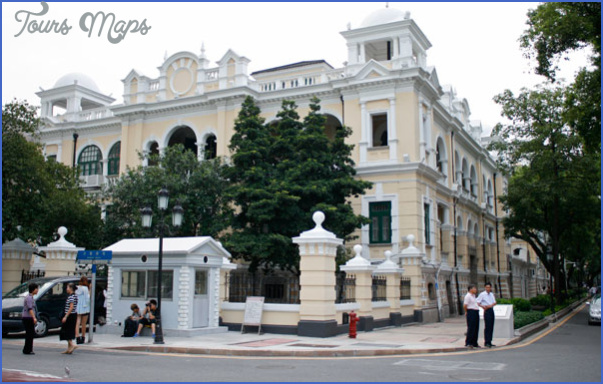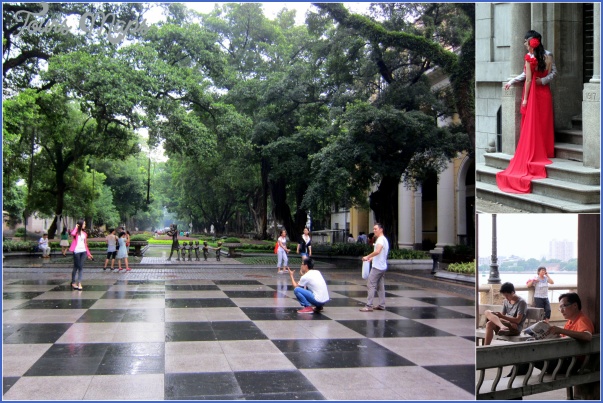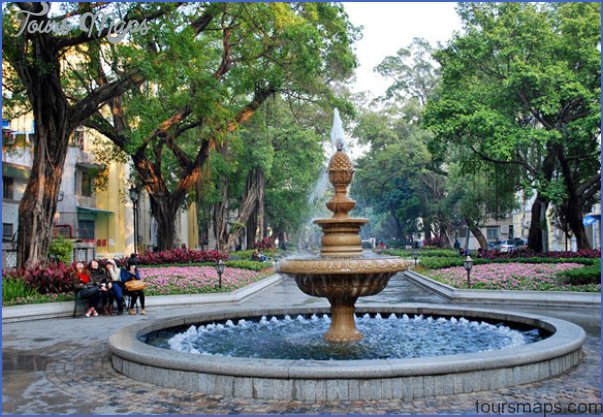The College of the Peasants’ Movement is to be found to the west of the Memorial for the Martyrs ofthe Canton Uprising. It was founded jointly by the Communist Party and the Guomindang in July 1924 in a former Confucian temple.
This college, in which the cadre of the Communist Party are educated, was from 1926 under the direction of Mao Zedong and its teachers included Zhou Enlai. Mao’s office, a large hall, library, refectory and students’ dormitory can all be visited.
The 58m/190ft high Cathedral of the Sacred Heart in Yide Lu Street is the largest Christian church in China. The French architect Guillemin built it between 1863 and 1888 in Neo-Gothic style.
The 8ha/20 acre Culture Park in the south ofthe city offers a wide range of entertainments, including exhibition halls, an open-air stage and an opera and concert hall.
At the market, consisting of two intersecting covered streets extending along Qingping Lu, there are all kinds of food on sale (fruit, vegetables, fish, snakes, turtles and poultry), animals of every type (dogs, cats, monkeys, etc.), herbs, earthenware and porcelain.
Shamian Island is 900m/1000yd long and 300m/330yd wide and lies in the south-west of the city, linked with the north bank ofthe Zhujiang by several bridges. Under Ming rule (1368-1644) the island was used as a harbour.
During the Opium Wars it was vigorously defended by the city leaders because of its strategic position, but in 1861 it was conceded to England and France. The foreign powers erected their consulates here, as well as villas, banks, churches and even a tennis court and sailing club. The Chinese needed special permission to be able to set foot on the island.
It is only since 1949 that Shamian has once again been under Chinese administration. Today some ofthe larger consulates are still located here.
Shamian Island Photo Gallery
Maybe You Like Them Too
- The Best Cities To Visit in The World
- World’s 10 Best Places To Visit
- Coolest Countries in the World to Visit
- Travel to Santorini, Greece
- Map of Barbados – Holiday in Barbados

